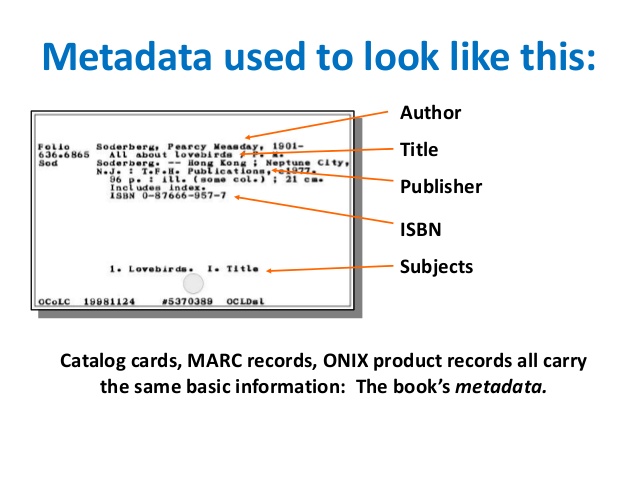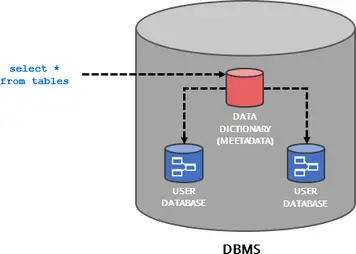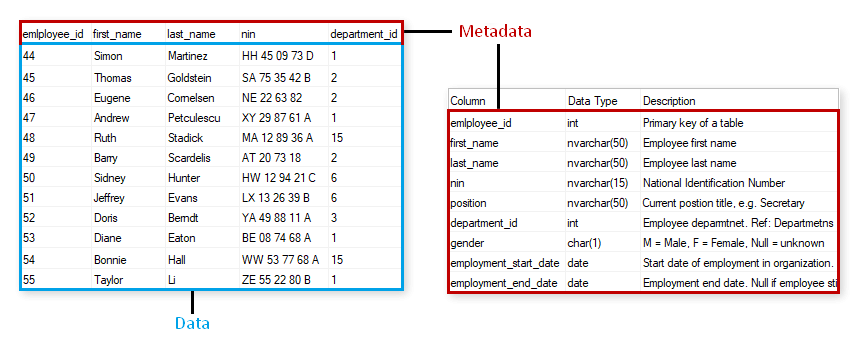Metadata in DBMS is the data (details/schema) of any other data. It can also be defined as data about data. The word ‘Meta’ is the prefix that is generally the technical term for self-referential. In other words, we can say that Metadata is the summarized data for the contextual data.
For example, consider the index of any book or novel; it serves as the metadata that leads us to the detailed data inside the book.
What is Metadata?

For instance, Metadata in DBMS has the following definitions:
- Metadata is the value that leads us to the actual data;
- The Metadata is an acronym for the detailed data;
- Metadata is the index of a library in the data warehouse;
- Metadata is a description or schema of the actual data
In a database, information is organized and stored in a structure. This data is arranged in tabular form (rows and columns) so that it can be accessed and reorganized quickly. After the structural arrangement of data, each part has its metadata as an index number in a book for each chapter. This index number is known as the metadata that defines the schema for other data.
Types of Metadata
There are several types of metadata according to their uses and domain.
Technical Metadata
This type of metadata defines database system names, tables names, table size, data types, values, and attributes. Further technical metadata also includes some constraints such as foreign key, primary key, and indices.
Business Metadata
It consists of the ownership of data, changing policies, business rules and regulations, and other business details. This type of metadata is related to a particular business.
Operational Metadata
This type includes the data which is currently under any operation. Besides, it represents the data that is used by executive-level managers to perform any task. Also, this type of metadata can be purged, archived, or activated and can also be migrated.
Descriptive Metadata
Descriptive metadata describes any file, folder, book, image, or video. It may include details of data such as title, author, date, size, author name, published on, and similarly others.
Metadata in DBMS

Metadata in DBMS refers to the information that describes the schema and other information related to the stored data in the database, including storage, programs, data elements, usage, and additional related information. Let’s check the following types of metadata in DBMS.
Schema
- Tables
- Columns
- Constraints
- Indexes
- Sequences
Physical Execution
- Backup files
- Partitions
- Restored files
Storage
- Table size
- Datatype size
- Variable size
- Program size
- Number of rows and columns
Also, Metadata has a significant role in the database. Besides, it acts as a directory in the database for accessing the different files. Further, metadata can also be useful in many ways, like database reporting, auditing, querying, and transforming. It plays a crucial role in DBMS.
Metadata is also essential for interpreting the contents in the database. For example, a set of data with their schema, such as dates and names will get you confused. It becomes hard to identify the data you are interpreting. Besides, if there’s metadata for that existing data, you get an idea of the database you are interpreting with.
Basic metadata including rows and columns names that helps a user to easily identify the data being described. And if there’s a list of data with no metadata, it could be hard to say what the data is about. Now suppose, there’s a column with name ‘Expired domains’ will let you know that these domains have been expired. Additionally, if there’s another column of ‘Date’, it will let you know the date when it got expired.
An Example of Metadata in DBMS

As you can see in the above image, a relational database stores the data as well as metadata in a structured way. The data stored in a structured way is called the Data Dictionary or System Catalog. The above metadata holds the following information:
- Tables (rows and columns)
- Datatypes
- Values
- Table relationships
- Constraints
- and others
Further, through this information, it’s easier to access or identify any database.
Final Words on Metadata
Metadata is data about the data and not the actual context of data. Hence, it can be made publically available as it only describes the raw data and doesn’t provide any access to it. Metadata gives the idea and summary details about any database which is enough to understand what the file is but does not give the complete instance of that file.
For any other queries, please let us know in the comment box below.
The post Metadata in DBMS – Overview and Types appeared first on The Crazy Programmer.
No comments:
Post a Comment